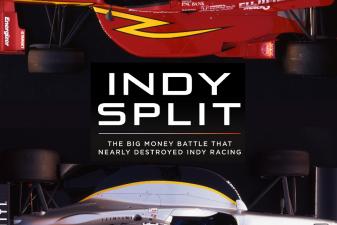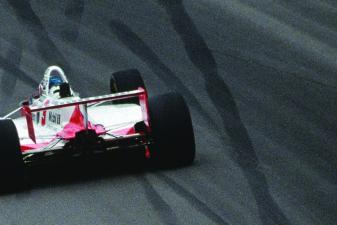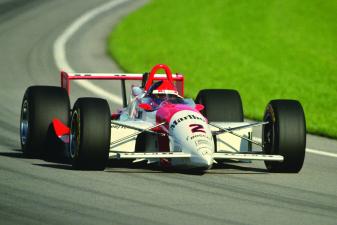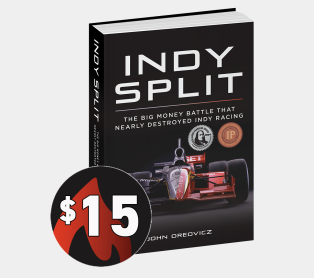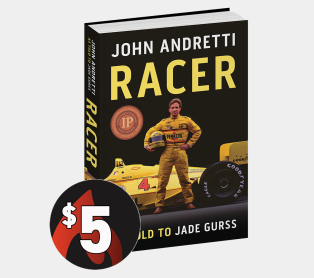A Checkered Past: Guardrails and Guillotines


Winning came naturally for Al Unser, Jr. He had a gift for finding the fast line on the track and he possessed a boisterous and lovable personality. Fans and the press adored him, but behind this affable persona, his appetite for drugs and alcohol was destroying his private life. Unser's battle to climb out of that cave is one of the great stories in motorsports. A Checkered Past is an unblinking story of triumph, tragedy, and the road to recovery. In this excerpt from the book, catch a glimpse into the dangers of high-speed racing.
Guardrails are like giant scissors that separate when a car makes heavy impact, then rebound together like a guillotine. Guardrails are the reason Rick Mears nearly lost both of his feet the year before.
I wore high-top racing shoes, and as my car crashed, I felt my right shoe pulled off by the guardrail. Then the car bounced back into the middle of the track. Once it stopped, I was anxious to see if my feet were still there. Both were on the asphalt, surrounded by wreckage. I could see my sock, which at least meant my right foot was still attached.
I was in a lot of pain. I tried to climb out, but my feet wouldn’t move. “Something has trapped my feet!” I yelled to the first track worker to get to me. “See if you can see what’s holding them.”
The worker felt his way through the rubble and found the brake bias cable had pierced through my heel. He pulled on the cable and it all went black. It was such a jolt of pain, I passed out. I remember waking up in the track hospital in the infield. I started to cry. Sure, it hurt like hell, but it hurt worse because I had been leading. “I was leading!” was all I could say to the doctors and nurses.
I was heartbroken. I wanted to win so badly at Road America, as bad as I wanted to win almost anywhere. It was the first time in my life I had broken a bone. I had never felt that kind of pain. In non-technical terms, I had broken the inside “knob” of my right ankle.
They wrapped my ankle and loaded me in a van. John Potter, the president of the Championship Driver’s Association (CDA), drove Shelley and me in his van more than five hours to Indianapolis, straight to Methodist Hospital.
This was where Dr. Terry Trammell, an orthopedic surgeon who had operated on countless feet, ankles, and legs of racing drivers, was based. My fear was, what happens now? Would I be able to race at Pocono in only two weeks? Would this end what had been a solid third season? Even after the crash, we were in fourth place in the point standings. Would some other driver be in my pizza car? It’s a nightmare for drivers: seeing someone else driving your car. It’s like seeing someone else with your wife.



